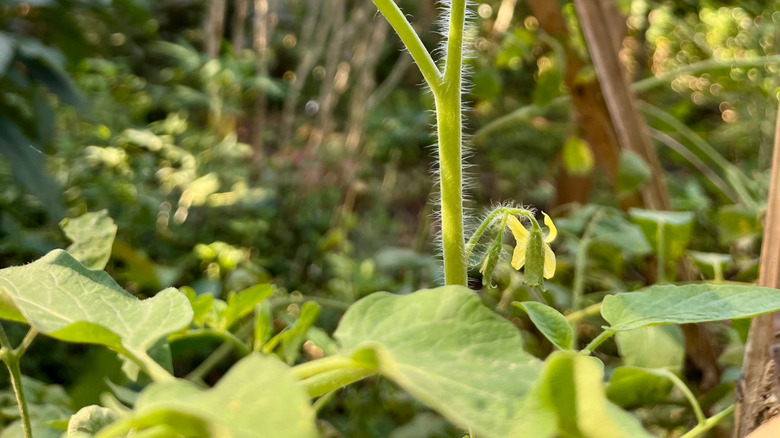What White Hair On Tomato Plants Really Means (And What To Do About It)
If you have ever reached into the tomato (Solanum lycopersicum) patch in your garden to pick a ripening fruit, you'll probably notice an unmistakable tomato scent on your fingers. The fresh and earthy smell that the gardener in you absolutely loves and knows by heart. But, do you know the reason behind it? If you look closely, you will notice a fine layer of white fuzz covering the entire plant, the leaves, stems, and even the young fruit. This white hair is easy to miss unless you look at the fruit under direct sunlight — like a soft halo around your plant.
This fuzzy coating is made up of trichomes. Trichomes are fine, hair-like structures that grow from the stem of the tomato, and they act as a defense mechanism against bugs. There are two types of trichomes noticed on tomatoes (glandular and non-glandular). Together, they help the plant regulate its temperature and conserve moisture.
Glandular trichomes release compounds that create the fresh tomato scent when your hand brushes against the leaves. These same compounds can also be the reason behind the flavor profile of the fruit. So, if you want to grow healthier tomato plants, remember not to remove these trichomes. And if you want fuzzier plants, try experimenting with hacks like planting your seedlings deeper and pruning them to maximize airflow.
A garden clue your tomatoes are thriving
Sometimes you miss the signs that your tomatoes are, in fact, dying. The tomato leaves turn brown, or your plant is overwatered. But what shows that your tomatoes are actually thriving? The white fuzz. Trichomes actually form on the plant really early on and continue growing as the plant matures. It helps them adjust to sunlight and humidity and keeps it balanced and healthy for longer terms.
Research from the University of Amsterdam revealed just how sophisticated these tiny hairs really are when it comes to protection from bugs and other pests. The study, published in the Journal of Experimental Botany, found that the tips of certain trichomes contain a sticky and chemically rich fluid that bursts out within a millisecond when touched by an insect. In wild tomato plants, this reaction occurs only by the weight of something as light as a grain. The sticky substance slows down the insect, causing it to retreat or perish. Cultivated tomatoes are less reactive, however, the principle is the same — healthy trichomes act as a living shield for your plants.
You can even encourage lush trichome growth by choosing varieties known for their fuzz and feeding them a steady diet of balanced nutrients. If you're starting from scratch, then learn how to grow juicy tomatoes from seed to bring some flavor to your garden. Create ideal conditions for your plant to thrive and make growing healthy tomatoes a breeze by planting it near herbs like mint. Once you notice the white fuzz on your plant, you can feel more confident that your plants are healthy and thriving!

